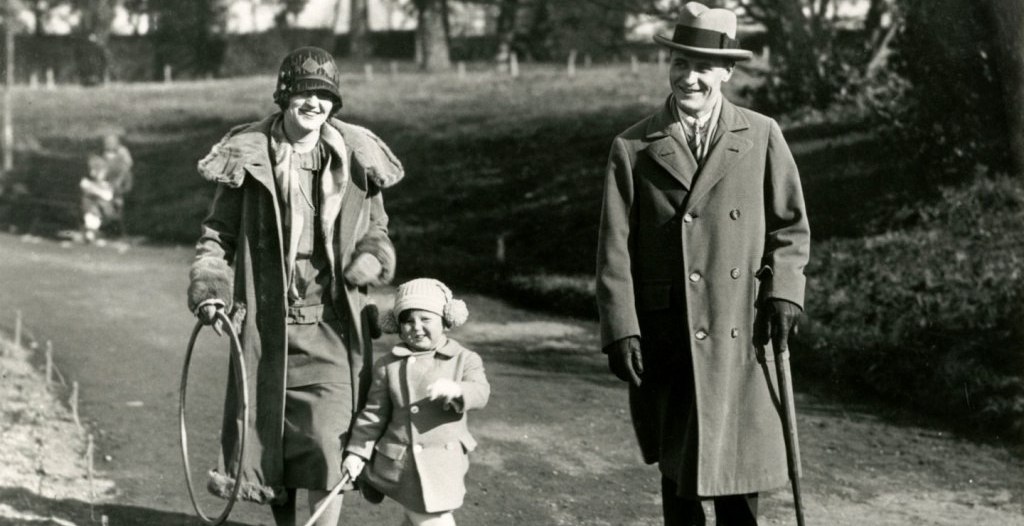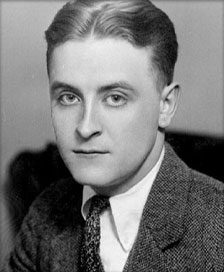Temperature, F. Scott Fitzgerald

Alternative title: The Women in The House
This is one of those stories that ought to begin by calling the hero “X” or “H—В—,” because there were so many people drawn into it that at least one will read this and claim to have been a leading character.
And as for that current dodge “No reference to any living character is intended”—no use even trying it.
We come out and state that the man in the case is Emmet Monsen, because that is (or almost is) his real name.
Three months ago you could consult the pictorials and news magazines and discover that he was just returning from the Omigis on the S.S. Fumataki Nagursha and landing at the port of Los Angeles with notable information on tropical tides and fungi.
He was in the pictorials because he was notably photogenic, being thirty-one, slender and darkly handsome, with the sort of expression that made photographers say: “Mr. Monsen—could you manage to smile once more?”
But, to take the modem privilege of starting a story twice, this tale should begin at another place—a medical laboratory in downtown Los Angeles, forty-eight hours after Emmet Monsen left the dock.
I
A rather pretty girl was talking to a young man whose business was developing electrocardiograph or heart charts—automatic recordings of that organ which has never been famed as an instrument of precision.
“Eddie hasn’t phoned today,” she said.
“Excuse these tears,” he answered. “It’s my old sinus. And these are the charts for your candid album.”
“Thanks—but don’t you think when a girl is going to be married in a month, or at least before Christmas, he could phone her every morning.”
“Listen—if he loses that job at Wadford Dunn Sons, you won’t be able to afford a Mexican marriage.”
The laboratory girl carefully wrote the name “Wadford Dunn Sons” at the top of the first heart chart, swore in a short but vicious California idiom, erased it and substituted the name of the patient.
“Those cardiographs,” added the laboratory man, “are supposed to go out by—”
Telephones interrupted him—but it was by no means Eddie; it was two doctors, both very angry at once.
The young lady was galvanized into frantic activity which landed her a few minutes later in a 1931 model, bound for one of those suburbs which make Los Angeles the most far-flung city in the world.
Her first destination was exciting, for it was the country estate of young Carlos Davis, whom, so far, she had seen only in flicker form and once in Technicolor.
Not that there was anything the matter with Carlos Davis’ heart—it worked the other way—but she was delivering the cardiograph to the tenant of a smaller house on his estate, originally built for his mother—and if Davis happened not to be at the studio she might glimpse him in passing.
She didn’t, and for the present—after she delivered the cardiograph at the proper door—she passes out of the story.
And at this point, as they say in picture making, the camera goes into the house, and we go with it.
The tenant was Emmet Monsen. At the moment he sat in an easy chair looking out into the sunny May-time garden, while Doctor Henry Cardiff opened the envelope with his huge hands to examine the chart and the report that went with it.
“I stayed out there one year too long,” said Emmet, “and like a fool I drank water! Man I worked with had the idea—he hadn’t touched water in twenty years, only whiskey. He was a little dried up—skin like parchment—but no more than the average Englishman.”
The maid flashed darkly in the dining-room doorway and Emmet called to her.
“Margerilla? Have I got that name right?”
“Yes, Mist Monsen.”
“Margerilla, if Miss Elsa Halliday calls up, I’m at home to her but to nobody else. Remember that name—Miss Elsa Halliday.”
“Yes suh, I seen her in the moving picture. Frank and I—”
“All right, Margerilla,” he interrupted politely.
Dr. Cardiff, having finished his reading, arose in half a dozen gigantic sections and paced; his gaze seeking the chandelier, as if his years of training were lurking there like guardian angels.
“So what?” Emmet asked. “Maybe it’s a growth? I swallowed a piece of fungi once—I thought it was a shrimp. Maybe it’s attached itself to me. You know—like women. I mean like women are supposed to do.”
“These,” said Dr. Cardiff in a rather too kind voice, “are not radio plates. This is the cardiograph. When I made you lie down yesterday and attached the wires to you?”
“Oh, yes,” Emmet said. “Let’s open some windows.”
He started to rise, but instantly the doctor’s great bulk loomed over him and forced him down.
“Mr. Monsen, I want you to sit absolutely in place. Later we’ll arrange a means of transportation.”
He gave a quick glance about, as if expecting a subway entrance, or at least a small personal derrick, to be in a corner of the room. Emmet sat waiting for him to speak, the expression in his handsome eyes was now very alert and wide awake.
“I knew on the boat I was running a fever—that’s why I’m laying up in California, but if this chart proves something serious I want to know about that too.”
Dr. Cardiff decided to tell all.
“Your heart is enlarged to a… to a…”
He hesitated.
“To a dangerous degree?” Emmet asked.
“But not to a fatal degree,” answered Dr. Cardiff.
“Come on, Doctor,” said Emmet, “what is it? Is the heart quitting?”
“Oh, now!” protested Cardiff. “That’s no way to look at it. I’ve seen cases where I wouldn’t have given the man two hours—”
“Come to the point,” Emmet exclaimed. “I’m sorry, Doctor, but I’m no child—I’ve taken people through typhoid and dysentery myself. What’s my chance—ten percent?
One percent? When and under what conditions am I leaving this very beautiful scenery?”
“It depends, Mr. Monsen, to a great extent on yourself.”
“All right. I’ll do anything you say. Not much exercise I suppose, no highballs, stick around the house till we see what nature—”
The maid was in the doorway.
“Mist Monsen, Elsa Halliday’s on the phone and it sure did thrill me down to my marrow—”
Emmet was up before the doctor could hoist himself from his chair, and on the phone in the butler’s pantry.
“I’ve thought of you all morning, Emmet,” a voice declared, “and I’m coming out this afternoon. What did the doctor say?”
“He says I’m fine—little run down, wants me to take it easy a few days. Elsa, do you know that except for those minutes at the dock I haven’t seen you for two years?”
“Two years is a long time, Emmet.”
“Don’t say it quite that way,” he objected. “Anyhow come as soon as you can.”
As he hung up the phone he realized that he was not alone in the pantry. There was the face of Margerilla and at her shoulder quite a different face that he stared at absently and abstractedly for a moment, as if it had no more reality than a magazine cover.
It belonged to a girl whose face was roundish and whose eyes were round—after all, not so astonishing—but the expression with which she regarded him was so full of a sort of beautiful attention, a fascinated and amused surprise that he wanted to say something back to it.
It did not quite ask, “Can it be you?” like some girls’ faces do; rather it asked: “Are you having fun out of all this nonsense?” Or else it said, “We seem to be partners for this dance,” adding: “—and this is the dance I’ve been waiting for all my life.”
To these questions or statements hinted at in the girl’s smile, Emmet responded with a stare.
“What can I do for you?” he asked finally.
“It’s the other way, Mr. Monsen.” She had a somewhat breathless voice. “What can I do for you! I was sent here by Rusty’s Secretarial Bureau. I’m Miss Trainor and I have a reference from Mr. Rachoff, the musician, who went to Europe last week—”
She held a letter toward him—but Emmet was in a mood.
“Never heard of him,” he announced, then corrected himself. “Yes, I have. But I never believe in references.”
He looked at her closely, even accusingly, but her smile had come back—and seemed to agree with him that all references were nonsense and she’d thought so for years—only she was glad to hear it said at last.
Emmet got up.
“That downstairs room will be your typing office. Margerilla will show you.”
He nodded and returned to the living room where he found that Dr. Cardiff was not alone but was engaged in secret conference with a lady in starched white.
So intense was their confluence that Emmet’s entrance did not interrupt it—it flowed on in a sort of sustained mumble for some time after he settled in his chair.
“This is Miss Hapgood, your day nurse,” said Dr. Cardiff finally.
An unconfident bell-shaped lady smiled appraisingly at Emmet.
“I’ve told her everything—” continued the doctor.
The nurse confirmed this by holding up a pad covered with writing.
“—and I’ve asked her to call me several times during the day. So you can be sure you’re being well looked after. Huh-huh.”
The nurse echoed his laugh. Emmet wondered if he had missed a joke.
The doctor then “ran along”—a process which consisted of picking up his bag several times, setting it down, writing a last-minute prescription, sending the nurse on a goose-chase for his stethoscope— and eventually blocking out the living room door with his bulky figure.
But by this time, Emmet who had no stopwatch had concluded that “running along” was merely a figure of sick-room speech.
“Mr. Moppet,” said the nurse, “I suppose we ought to begin by
